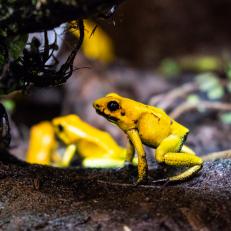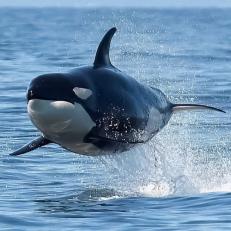7 of the World’s Most Endangered Species
May 15th is Endangered Species Day – a day to learn about animals that are at risk and to recognize national efforts to protect our endangered species and their habitats. Here’s what you need to know about some of the animals that are considered endangered species protected by the World Wildlife Fund.
Tiger
There were once 100,000 tigers across the Asian continent. Wild tigers are hunted to meet the demands of the $20 billion a year illegal wildlife market. But thanks to increased protections, tiger numbers have grown overall for the first time in a century. Wild tigers are slowly making a comeback with an estimated 3,900 tigers remaining in the wild. But commercial captive breeding efforts within farms can create significant obstacles to the recovery and protection of wild tiger populations. Project C.A.T. has helped purchase over 200 camera traps and placed throughout India/Bhutan site to help monitor tiger populations and provided modern equipment for Rangers to help their units monitor and take action against criminal activity.
Black Rhino
Between 1960 and 1995, black rhino numbers dropped by a sobering 98%, to less than 2,500. But thanks to conservation efforts across Africa, black rhino numbers have made a tremendous comeback from the brink of extinction. Numbers have doubled from their historic low 20 years ago, now, between 5,042 and 5,455 today. However, the black rhino is still considered critically endangered and a lot of work remains to bring the numbers up to even a fraction of what it once was—and ensuring that it stays there.
Whale Shark
Whale sharks are the largest shark and the largest of any fish alive today. Their white spotted coloration makes these gentle giants easy to distinguish. They have a unique pattern of spots that allow individual sharks to be identified. By taking photos and cataloging them, scientists have been able to identify 458 different whale sharks in the Philippines. The distribution of whale sharks indicates the presence of plankton and the overall health of our oceans. And while whale sharks are protected from fishing in many countries these days, they are still in decline in some areas.
African Wild Dog
With its population currently standing at 1,409 remaining, the wild dog is one of the world’s most endangered mammals. The largest populations remain in southern Africa and the southern part of East Africa (particularly in Tanzania and northern Mozambique). Major threats to the survival of wild dogs include accidental and targeted killings by humans, diseases such as rabies, habitat loss, and competition with larger predators like lions.
Black-Footed Ferret
Black-footed ferrets are one of the most endangered mammals in North America and are the only ferret species native to the continent. Once thought to be globally extinct, they are making a comeback. Today, recovery efforts have helped restore the black-footed ferret population to nearly 300 animals across North America. Their recovery in the wild signifies the health of the grassland ecosystem which they depend on to survive.
Eastern Lowland Gorilla
The eastern lowland gorilla is the largest of the four gorilla subspecies. They make their home in lowland tropical rainforests in the eastern DRC. In the last 50 years, its area range has decreased from 8,100 square miles to about 4,600 square miles today. There were nearly 17,000 eastern lowland gorillas in the mid-1990s but scientists estimate that the population has declined by more than 50% since then.
Sea Turtle
Sea turtles are a fundamental link in marine ecosystems. They help maintain the health of seagrass beds and coral reefs that benefit valuable species such as shrimp, lobster, and tuna. Over the last 200 years, human activities have tipped the scales against the survival of these ancient mariners. For example, sea turtles are dependent on beaches for nesting but uncontrolled coastal development, vehicle traffic on beaches, and other activities have directly destroyed or disturbed sea turtle nesting beaches around the world.
























